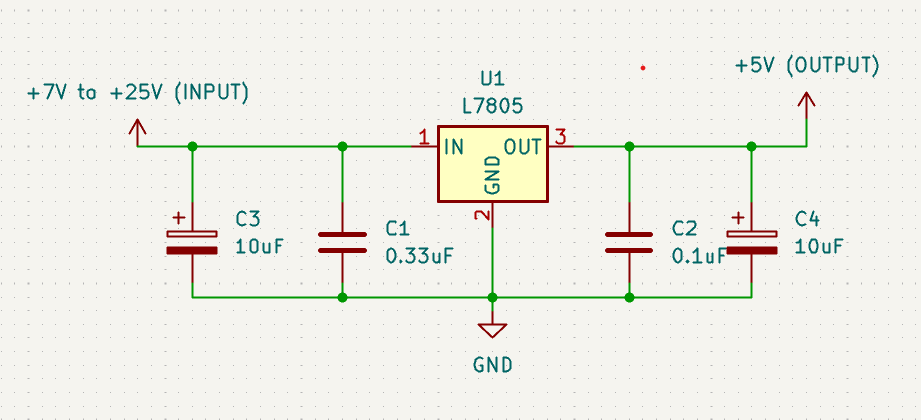A detailed step by step guide to design a good power supply for your DIY electronic projects.
The most important thing you need to consider while designing a power supply for your DIY Arduino project is the current and voltage requirements of the components and sensors connected to it. A clean, stable, and noise-free power supply is necessary for the reliable operation of ADCs and sensors. Power supply noise can introduce errors into analog readings and affect sensor accuracy.
Below is the schematic of a stable, noise-free and proven 5V power supply, designed around the popular LM7805 voltage regulator.
LM7805 Datasheet Highlights
| Parameter | Value |
| Input Voltage | typically 7 – 25V (Min. 7V) |
| Output Voltage | 5V (fixed) |
| Output current | Up to 1A |
Bill of Materials (BOM)
| Component | Quantity |
| LM7805 | 1 |
| 0.33uf Ceramic Capacitor | 1 |
| 0.1uf Ceramic Capacitor | 1 |
| 10uf Electrolytic Capacitor | 2 |
Schematic

Note
10uF capacitors helps to smoothen low frequency ripples and transient load.
Capacitors (0.33uF and 0.1uF) filter high frequency noises.
Placing capacitors close to regulator pins improve stability and noise rejection.